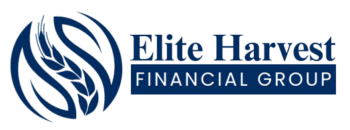Group Benefits Insurance
How to Navigate Group Benefits Insurance
Did you know that 78% of employees are more likely to stay with their employer because of their benefits package? Group benefits insurance has become a crucial factor in attracting and retaining top talent in today’s competitive job market.
Many organizations struggle to create effective group benefit services insurance programs that balance employee needs with company budgets. Understanding group health benefit insurance options and implementing the right mix of coverage can significantly impact both employee satisfaction and business success.
Strategic Value of Group Benefits
The strategic value of group benefits insurance extends far beyond basic employee coverage. Recent studies show that 34% of Canadian employees stay with their current employer primarily because of their benefits package, highlighting the crucial role of comprehensive group benefit services insurance in talent retention.
From a financial perspective, group benefits offer significant tax advantages. While a salary increase of CAD 1.39 actually costs employers CAD 1.79 after tax considerations, the same amount spent on health insurance provides full value as most benefits are tax-free for employees.
The return on investment for group health benefit insurance is compelling:
- Improved recruitment and retention (48% effectiveness)
- Enhanced employer brand recognition (42% impact)
- Increased ability to attract quality talent (41% success rate)
- Better employee wellbeing through tailored solutions (40% improvement)
- Reduced administrative costs (37% savings)
Data-driven insights reveal that organizations implementing comprehensive benefits programs see an average return of CAD 4.16 for every dollar invested. This ROI becomes particularly significant when considering that 76% of organizations currently struggle to demonstrate the full value of their benefits investments.
In today’s competitive landscape, where 84% of companies cite talent competition as their top concern, a well-structured group benefits program serves as a powerful differentiator in both attracting and retaining valuable employees.
Building a Comprehensive Benefits Package
Creating an effective group benefits insurance package requires careful consideration of your workforce’s diverse needs. A well-structured plan should be customizable, sustainable, and scalable to accommodate future growth.
Start with these essential components in your group health benefit insurance package:
- Basic health and dental coverage
- Life and disability insurance
- Extended health care services
- Health spending accounts (HSAs)
- Wellness programs
- Critical illness coverage
The key to success lies in flexibility. Modern group benefit services insurance should offer personalized options, allowing employees to allocate their benefits according to their unique circumstances. Consider implementing a Flexible Spending Account (FSA) that combines both health and wellness spending options.
To maximize value while containing costs, incorporate features like preferred pharmacy networks, mandatory generic substitution for prescriptions, and reasonable dispensing fee limits. Consider adding specialized programs such as personalized medicine and opioid management to support comprehensive employee health care.
For international businesses, ensure your package includes coverage for employees working abroad or temporarily stationed in different countries. This global perspective helps maintain consistent benefits across your entire workforce while addressing specific regional healthcare needs.
Remember that the most effective benefits packages evolve with your organization. Regular reviews and adjustments based on employee feedback and utilization patterns will help ensure your program remains competitive and valuable to your workforce.
Optimizing Employee Engagement
Maximizing the value of your group benefits insurance starts with effective employee engagement. Research shows that 76% of employers struggle to help employees understand and value their benefits package, while 55% of employees admit they should know more about their available benefits.
To bridge this gap, successful organizations implement multi-channel communication strategies:
- Regular benefits education sessions and workshops
- Digital resource centers with on-demand information
- Quarterly reminder campaigns about available benefits
- Wellness initiatives and health monitoring programs
- Employee assistance program (EAP) promotion
- Interactive benefits fairs and expert consultations
The key to driving engagement lies in making your group benefit services insurance accessible and understandable. Creating a user-friendly benefits portal where employees can easily access and manage their benefits has shown to increase utilization rates by up to 300%.
Employee feedback plays a crucial role in optimizing engagement. Regular surveys and feedback sessions help identify barriers to benefits utilization and areas for improvement. Companies that implement employee suggestions see a 69% increase in benefits satisfaction and higher overall program participation.
Remember that engagement isn’t just about communication—it’s about creating a culture of wellbeing. Incorporating wellness challenges, health education programs, and flexible work arrangements into your group health benefit insurance strategy can significantly boost participation rates and employee satisfaction.
Conclusion
Group benefits insurance stands as a powerful tool for business success, offering significant returns through improved employee retention, tax advantages, and enhanced workplace satisfaction. Companies implementing well-structured benefits programs see substantial ROI while maintaining competitive advantage in talent acquisition.
Building an effective group benefits package requires careful attention to both core coverage needs and flexible options. Smart organizations recognize that success lies not just in offering benefits, but in making them accessible and meaningful through clear communication channels, digital platforms, and regular engagement initiatives.
Successful group benefits management demands ongoing attention and refinement. Regular program evaluations, employee feedback integration, and benefits education ensure your investment delivers maximum value. Organizations that prioritize these elements create stronger, more resilient workforces while establishing themselves as employers of choice in their industries.
Get the Latest Financial Tips and Trends
Sign Up for Our Newsletter to Master Life Insurance, Investments, and Mortgages
Additional Services
Empower Your Financial Decisions
Book Your Free Consultation to Discuss Your Financial Needs and Goals













